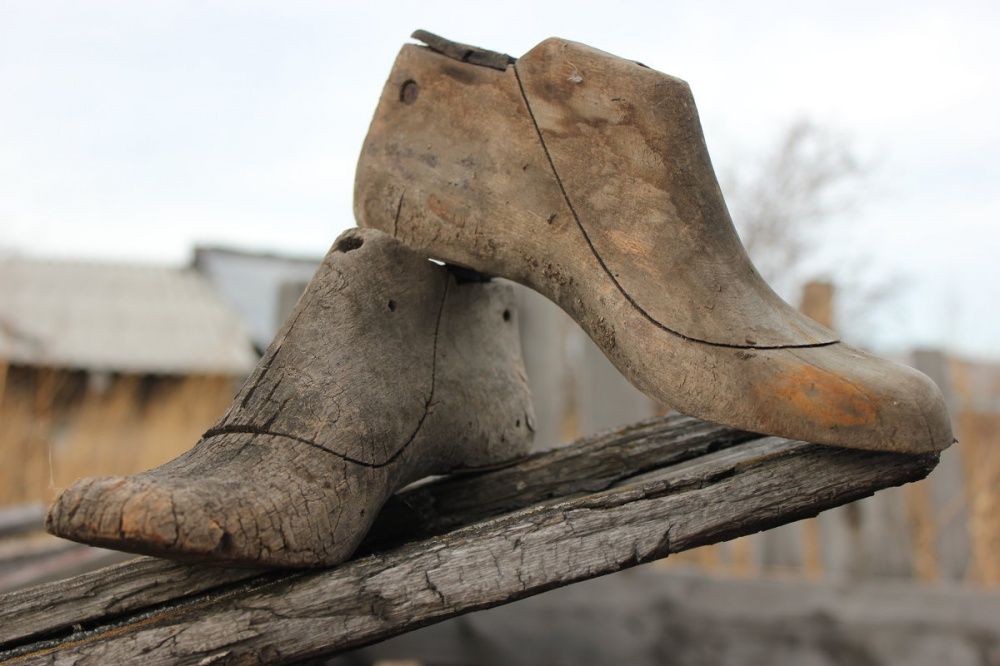
Pads master

The profession of a boatmaker is rare and complex, you can learn it all your life. In the days of the Soviet Union, there were no more than 100 people in the whole country of masters to develop new forms of blocks from a piece of wood, and today shoe makers of such a high level are known by name. Anatoly Vasilievich Andriyanov - one of the representatives of that old school. He once made a shoe for Tatyana Samoilova, aviator Valentina Grizodubova and developed new shoe shapes for Slava Zaitsev's collections, and today he works at Spark and spends most of his time in China. In August, Anatoly Vasilievich arrived in Moscow, and the Shoes Report met with him to record the story of one of the recognized masters of shoe decks.
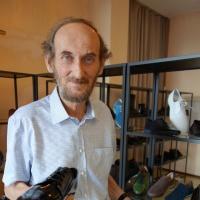 Anatoly Andriyanov - shoe affairs master
Anatoly Andriyanov - shoe affairs masterFrom Dynamo Stadium to Model House
“I was born in 1940 and all my childhood I lived with my parents in a hut near the Dynamo stadium. My friends and I often gave balls to famous football players who trained at the stadium, and they fed us for it. I studied at school, but I did not study very well - more and more I played soccer or hockey. In general, sport was more interesting to me than school. Once, when I was in the last class — and this was 1955 year — our class teacher left me after school and said: “Tolya, you won’t go to college anyway. You study poorly and you have one football in your head. And your family needs a breadwinner, so you need to get a profession. I recently walked past the No. 64 art and craft school, and now an extra set has just been announced there. Try to submit documents there. ” Previously, a vocational school was considered a place where difficult teenagers fall - students were fed there twice a day, dressed in uniforms and after graduation they were assigned to work - some as a turner, some as a locksmith. Dad always told me: "You will study hard, you will go to a vocational school." True, that school, which the teacher advised me, was with an artistic bias: masons, cabinet makers, sculptors were trained there - many of their works were exhibited at VDNKh. But I never really held a pencil in my hands and skipped all drawing lessons, so the proposal of the class teacher seemed strange to me. But just in case, I submitted the documents.
An additional set has been announced in the group of fashion designers, loggers. This course was founded almost by state order, and was supervised by Ryabkin, a leading specialist in the orthopedic shoe factory, which was located next to the Airport metro station. Specialists of this plant made custom-made shoes for Kaganovich, - he was then a member of the Presidium of the Central Committee of the CPSU. Kaganovich’s legs were sore, and picking up his shoes was difficult. Each time Kaganovich was bothered by something in her, and once he told Ryabkin: “If you can’t make shoes for me, then what do ordinary people wear?” To which Ryabkin answered him: “What do you want? No experts! ” There really were no specialists - mainly people without special education who came from shoemakers worked. Although before the revolution, as our teachers told us, Russian footwear production did not differ much from European in level and quality. We had private shoe factories and entire dynasties of loggers: in Moscow, the Stulovs dynasty, in Leningrad - the Sorokins dynasty. There was a handmade school, art. Pads then how did? They chopped it with an ax, cut it with a knife, planed with rasps, brought it with sandpaper. And we were given this school. We were taught as before the revolution, when everything was done manually from beginning to end. We could go to the forest, cut down a tree, cut a block out of it with an ax, and process it with a knife. Now no one knows how, there is no school left. And this school was handed over to our graduation, and the next one after us. True, he was not so successful anymore, and all his graduates disappeared, and then they completely closed the course - apparently, there wasn’t much need for it. But there are no more specialists like my generation of loggers. There were only three of us throughout Moscow — me, Zhenya Orlinsky, and Slava Kitsis. Each has its own style, although the same school. But they don’t work now, only me. ”
Unknown profession
“After graduation, we had to go by distribution to work at the orthopedic shoe factory. But we did not want to work there, they were young, you can understand. And then no one knew about the profession of the bootman. We were embarrassed to say that we were loggers, and when we met the girls, only the prefix “fashion designer” came to our rescue. Now everyone knows what a shoe is, and why it is important in shoes, and then this profession was little known to anyone.
In general, we didn’t go to work at the plant, but we were lucky: after graduating from the school in 1958, Zhenya Orlinsky and I were invited to the Shoe Model House on Sadovo-Triumfalnaya. He was led by Vera Komarova, a very intelligent, educated woman, the whole Union knew her. Under her leadership, six artists worked. They all graduated from good art universities, were very talented and competent people, from whom it was possible to learn a lot. I have been working in the Model House for 10 years, and I owe these people everything that is good in me. I then, one might say, came from the street: although it was an art school, it’s still just a school. And since when creating the pads you work directly with the designer, you communicate with him and adopt his taste.
Artists of the House of Shoe Models developed a new fashion, which was then recommended to the entire light industry of the Soviet Union - such was the system. But sometimes we created custom-made shoes, mainly for famous people. Once we made shoes for the aviator Grizodubova. Her legs were swollen badly, and she needed beautiful shoes for the reception. We made her pointed boat with stilettos, she was very pleased. I made pads for Tatyana Samoilova: she had everything in order with her legs, she just needed special shoes. We were also approached by Slava Zaitsev, who worked as an artist in the House of Fashion Models on Kuznetsky Most. In 1966, he prepared his collection for display in Japan and Germany, and came to our house of shoe models with sketches, and there are such wound, humpback, filled socks ... Our artists of the Model House did not offer this yet, because for shows collections it was customary to make shoes that do not distract attention from the costume. According to the sketches of Glory Zaitsev, I made pads and drove them to the feet of the fashion models who traveled with him to Japan, and our designers made pointed shoes on these pads. As we were later told, in Germany, after the show, Zaitsev’s glory was bombarded with flowers. ”
Unattainable ideals
“I fell in love with my profession. I think that this came with the understanding that my work is needed and gives pleasure to those people with whom I worked. The most difficult thing is to make a shoe that the designer will like. When working with a designer, it is important to understand what he wants, but at the same time to make sure that it is not only beautiful, but also functional. This, of course, is very difficult, and there are conflicts, especially when you work not according to the sketch, but according to the prototype. A designer should not only be a great artist, he should well understand the function of shoes. After all, what is the use if the shoes are beautiful, but uncomfortable? My master, from whom I studied, always said: bad shoes can be sewn on a good shoe, but good shoes cannot be sewn on a bad shoe. The shoe is like the foundation of a house: if there is a mistake in the foundation, sooner or later it will crack, collapse or collapse. It is impossible to make mistakes in our business, but it is also impossible to do everything perfectly, since the shoe should suit as many people as possible. Therefore, perfect blocks do not exist, and I do not have a block that I am proud of - I just do not consider them a matter of pride. Even if I finished the block and am satisfied with it, after a while I still notice flaws. You can, of course, close your eyes to something, but we have been taught differently. Sometimes it even happens that I finished work, and the next day I looked at the block, threw it away and started all over again.
The pitman is not obliged to create a fundamentally new form, he has another task - to make a shoe for which shoes will be sold in Russia, which would be comfortable and made in the same style - this is what designers require. Yes, and you can’t imagine anything new - everything was invented before us. At shoe enterprises, one copy of each model of the shoe is stored, and for such collections it becomes obvious that everything was already there. Even in the photographs of the empresses and nobles, it is noticeable that the heels, the shape of the toe, heel, are all the same as ours, and everything goes in a circle. Only time and our vision change. The block also remains the same, because it is not born by itself, but is created on the basis of its predecessors. There are standards developed by the masters, and the block is not made every time anew. The shoe sticker sticks or welds new elements onto an existing shoe block, taking into account the positive qualities of the source and doing as the designer likes or as it will be better sold. As a result, the block becomes larger. But since my school is based on working with wood, I use the method from larger to smaller - I cut off the excess from the block. This is my style of work, and I always use only my pads, correcting the minuses and preserving the pros. ”
Italy footprint
“The most interesting thing is to do something for the first time. For example, they brought me a prototype from Italy and asked me to make the same block. But this does not mean that I will completely copy it, because this is not a watch where there is mechanics and everything can be repeated a millimeter to a millimeter. It is necessary to repeat not what you see in the guise of the leather, but the part that is invisible to the eye, which served as the foundation, the basis for this shoe. Therefore, even if you make a block on the prototype, you still create something of your own. This is a very interesting job. I look at the shoe and think: firstly, the prototype was sewn a year ago, and today that Italian bootman would have made the shoe much better, because there is no limit to perfection, and something new is added every year. You will notice this if you put next to the collection of this and last year. And you, as a professional, should make it even better. Secondly, you need to understand who will wear these shoes, who suits them better. You look at different women and think, but would they wear such shoes?
When I worked at the Model House, we went to the All-Union Chamber of Commerce, looked at foreign magazines and models of shoes brought from abroad. So I comprehended the basics of the Italian school. Our artists, based on samples of Italian shoes, developed some models, however, like all other artists in the world. I have been to Italy twice. The first time in the 1966 year - six months before the first exhibition of shoes in the Luzhniki Union in the Soviet Union. We, experts from all over the Soviet Union - artists, fashion designers, loggers, were sent to Italy for two weeks to watch, study and prepare worthy samples from the Soviet Union for the exhibition. Despite the fact that I was not a Komsomol member and never traveled to democratic countries, they let me out without notations and additional questions - and despite the fact that it was very difficult to travel abroad then. Apparently, when the state really needed it, they let out without talking. Italy made such a strong impression on me that then I didn’t even want to go anywhere. Rome, Venice - all this did not fit in my head for a very long time. Then I realized that I was too far from the Italian loggers professionally, although I did not understand how far. I could not even compare how skilled I am compared to them. And in the 1985 year, when I already went to Italy for the second time on my own, I understood in frank conversations with the fashion designers-boatmen what the difference was. Of course, we have a strong school, and it is not known who will make the block faster and better - we or Italians. But the Italian school is based on aesthetics, and in order to adopt their culture of shoe production, one must be born and live in Italy. But in general, I realized that we are equal with the Italians. We talked to the logger who worked at the shoe factory in Forlì through an interpreter, but seemed to speak the same language - just kindred spirits. Whatever he talks about - I know that, no matter what I tell him, he knows that too. That is, we were at the same level of professional development, we just achieved it in different ways. ”
Work with pads, salary pads
“In the Model House, I worked for 10 years, and then he was transferred from Sadovo-Triumfalnaya to a new building in Cheryomushki. There was a factory there, which the ministry decided to make experimental and give completely to the needs of the Model House. It was the right decision: it’s one thing when you make pads and don’t delve into the production process, and another when you communicate with technologists and understand what is profitable to produce and what is not. But by that time we already had some disagreements in the Model House, and it was a long way to go to New Cheryomushki. In general, I don’t remember exactly how, but I was lured to the House of models of domestic services in Khimki, owned by the Ministry of Public Services. They also had their own design bureaus, only they served not industry, but private ateliers. I worked there for six months and realized that I had made a mistake. It wasn’t even a matter of people, because almost the entire composition of the House of Models moved there with me. I just realized that this was not mine: other tasks, not so interesting. But I did not begin to return, I considered that it was not good. Since it was necessary to work somewhere — I already had a family by that time — I got a job as a logger at the First Model Factory of the Vostok Association on Krasnaya Presnya. I worked for two years and I was invited to the Cuban shoe factory. She used to sew ordinary slippers, but when a strong fashion designer David Lvovich Zabryansky came from the House of Shoe Models, the factory began to sew moccasins and turned into an interesting experimental production. In total, I worked in Kubinka 15 for years, but quit once every five years due to the fact that there was little work. But every time I was called back and I returned, because it was interesting to work there.
During the second trip to Italy in our delegation, I met with the director of the Armavir shoe factory, Shupletsov Gennady Arkadevich. Soon, perestroika began, and we decided to organize our own pads development enterprise. I developed these pads, and the plant in Armavir replicated them. The entire shoe industry of the Soviet Union already knew me then, and Moscow shoe designers could take part in this enterprise. Everything was very interesting until, due to a shortage in the country, we did not have to pay barter employees. And how can I pay salaries with pads? Who needs them? Therefore, I just closed the enterprise and began to work for those who knew me and invited me under the contract. 10 worked for years with Liska, then he began to travel to China for the first time. Now I work for Spark, and this Spring-Summer 2014 collection is my first collection for this company. Actually, I don’t like to change jobs, because I need to organize my workplace, to be able to do what I need, regardless of external circumstances. Now I mainly work in China, and there everything depends only on me. If I did a bad block, then it is solely my fault. In Russia, you can let the customer deadline, because little depends on you: here, after I developed the block, I can’t immediately sew shoes on it and check my work, but in China there are all the possibilities.
I would love to come back to work with people who create fashion, with those who follow the industry. I feel inside that I could. You know how they say: it doesn’t matter how old you are, it matters how much you feel. I feel young, absolutely young. And on all business trips I try to communicate with youth. True, I stand out against their background, but let them think what they want. I will communicate with youth, because youth is life. ”
| Please rate the article |
Materials on the topic
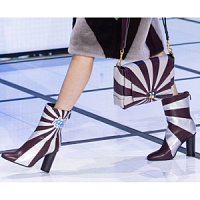
Pixel Collection Anya Hindmarch
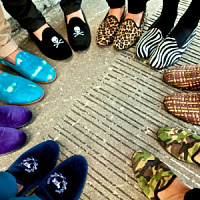
5 brands specializing in tailoring loafers
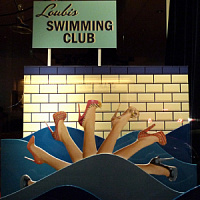
5 Showcases Christian Louboutin
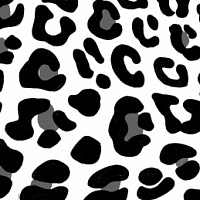
Spotted shoes. New reading
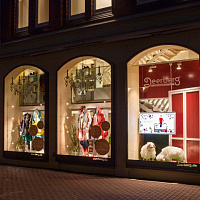
Let there be light! Lighting solutions for shop windows and a sales area
Popular
 Coach turned to Big Data analysis and won the interest of a young audience
American handbag brand Coach has planned the success of its Tabby model among a younger audience, Generation Z, by turning to big data analysis, abandoning traditional and analogue tools, such as human intuition or the ability of any executive to sense “which way the wind will blow,” writes B.O.F.
Coach turned to Big Data analysis and won the interest of a young audience
American handbag brand Coach has planned the success of its Tabby model among a younger audience, Generation Z, by turning to big data analysis, abandoning traditional and analogue tools, such as human intuition or the ability of any executive to sense “which way the wind will blow,” writes B.O.F.
 IDOL updates the concept
The IDOL brand, part of the Melon Fashion Group portfolio, opened the first flagship in an updated concept in the Aviapark shopping center in Moscow.
IDOL updates the concept
The IDOL brand, part of the Melon Fashion Group portfolio, opened the first flagship in an updated concept in the Aviapark shopping center in Moscow.
 Louis Vuitton opens a new factory in Italy
Louis Vuitton has opened its second shoe factory in Italy. After opening the first one in Fiesso d'Artico in Veneto, the LVMH flagship brand has just opened a new production site dedicated to this category of footwear in the industrial zone of Civitano in the Marche region. There is also another brand production facility in Tuscany, where bags and leather accessories are produced, writes fr.fashionnetwork.com.
Louis Vuitton opens a new factory in Italy
Louis Vuitton has opened its second shoe factory in Italy. After opening the first one in Fiesso d'Artico in Veneto, the LVMH flagship brand has just opened a new production site dedicated to this category of footwear in the industrial zone of Civitano in the Marche region. There is also another brand production facility in Tuscany, where bags and leather accessories are produced, writes fr.fashionnetwork.com.
 The Euro Shoes@CAF exhibition will be held in Almaty
From March 11 to 13, the Euro Shoes@CAF (Central Asia Fashion) exhibition will be held in Almaty at the Atakent exhibition complex. The exhibition, which is the largest international event in the fashion industry in Central Asia, will present collections of clothing, shoes and accessories.
The Euro Shoes@CAF exhibition will be held in Almaty
From March 11 to 13, the Euro Shoes@CAF (Central Asia Fashion) exhibition will be held in Almaty at the Atakent exhibition complex. The exhibition, which is the largest international event in the fashion industry in Central Asia, will present collections of clothing, shoes and accessories.
 Euro Shoes will start operating on February 19 in Moscow!
The winter session of the international exhibition of footwear and accessories Euro Shoes premiere collection will be held in Moscow at the Expocenter from February 19 to 22. The organizers promise the presence of all the main participants at the exhibition, as well as new names from Europe, Asia and Russia.
Euro Shoes will start operating on February 19 in Moscow!
The winter session of the international exhibition of footwear and accessories Euro Shoes premiere collection will be held in Moscow at the Expocenter from February 19 to 22. The organizers promise the presence of all the main participants at the exhibition, as well as new names from Europe, Asia and Russia.
 American buyers couldn't buy Birkin bags and sued Hermès
French fashion house Hermès is facing a lawsuit in California from two customers who were unable to purchase exclusive Birkin bags. The fashion house is accused of unfair commercial practices.
American buyers couldn't buy Birkin bags and sued Hermès
French fashion house Hermès is facing a lawsuit in California from two customers who were unable to purchase exclusive Birkin bags. The fashion house is accused of unfair commercial practices.
 Why Rendez-Vous and Yandex Lavka released a “bread bag”
Shoe retailer Rendez-Vous announced the launch of a spring collaboration with Yandex Lavka and released a roll that resembles the shape of a woman’s handbag. This “Bread Bag” is presented in the Yandex.Lavka application at a price of 249 rubles. On the product packaging there is a promotional code for 1000 rubles, which can be spent in the Rendez-Vous network.
Why Rendez-Vous and Yandex Lavka released a “bread bag”
Shoe retailer Rendez-Vous announced the launch of a spring collaboration with Yandex Lavka and released a roll that resembles the shape of a woman’s handbag. This “Bread Bag” is presented in the Yandex.Lavka application at a price of 249 rubles. On the product packaging there is a promotional code for 1000 rubles, which can be spent in the Rendez-Vous network.
 Camper has released innovative sneakers - designers
Spanish brand Camper's new Roku sneaker features six interchangeable components to create up to 64 different looks and color combinations. Roku means "six" in Japanese.
Camper has released innovative sneakers - designers
Spanish brand Camper's new Roku sneaker features six interchangeable components to create up to 64 different looks and color combinations. Roku means "six" in Japanese.
 Christian Louboutin presented a collection in a cowboy style
At the Loubi Show in Paris, the French luxury brand Christian Louboutin presented its fall 2024 collection, following the trend - in the style of the Wild West. It included cowboy boots and rhinestone loafers.
Christian Louboutin presented a collection in a cowboy style
At the Loubi Show in Paris, the French luxury brand Christian Louboutin presented its fall 2024 collection, following the trend - in the style of the Wild West. It included cowboy boots and rhinestone loafers.
 Fashion Week takes place in Moscow
Fashion Week takes place in the Russian capital. Events include fashion shows, markets where you can purchase clothes, bags and accessories, and a B2B Showroom for fashion industry professionals.
Fashion Week takes place in Moscow
Fashion Week takes place in the Russian capital. Events include fashion shows, markets where you can purchase clothes, bags and accessories, and a B2B Showroom for fashion industry professionals.
 Turkish brand Vaneda on Euro Shoes
Street style, sport, outdoor, military – the main style directions of footwear of the company from Turkey
Turkish brand Vaneda on Euro Shoes
Street style, sport, outdoor, military – the main style directions of footwear of the company from Turkey
 Kari accuses Zenden of unfair competition and is suing the FAS
The largest Russian shoe chain, Kari, appealed to the Moscow Arbitration Court to declare the actions of the Federal Antimonopoly Service (FAS) illegal, writes RBC.
Kari accuses Zenden of unfair competition and is suing the FAS
The largest Russian shoe chain, Kari, appealed to the Moscow Arbitration Court to declare the actions of the Federal Antimonopoly Service (FAS) illegal, writes RBC.
 Fashion trends Fall-Winter 2023/24 for commercial footwear purchases
Permanent contributor to Shoes Report. Elena Vinogradova, an expert in sales and purchases in the fashion business, prepared an overview of the trends for the autumn-winter 2023/24 season especially for us.
Fashion trends Fall-Winter 2023/24 for commercial footwear purchases
Permanent contributor to Shoes Report. Elena Vinogradova, an expert in sales and purchases in the fashion business, prepared an overview of the trends for the autumn-winter 2023/24 season especially for us.
 MSCHF and Crocs launch "Big Yellow Boots"
Creator of the Big Red Boots, Brooklyn brand MSCHF has teamed up with American plastic clog and sandal brand Crocs for another oversized shoe. The new Big Yellow Boots will go on sale on August 9th.
MSCHF and Crocs launch "Big Yellow Boots"
Creator of the Big Red Boots, Brooklyn brand MSCHF has teamed up with American plastic clog and sandal brand Crocs for another oversized shoe. The new Big Yellow Boots will go on sale on August 9th.
 Five rules of professional lighting for a shoe store - something that is relevant in any season
When developing a lighting concept for shoe retailers, it is important to take into account not only the history of the brand, the architectural content of the premises, the target audience of the stores, but also the seasonality of the goods. With the onset of the cold season, client preferences change: bright weightless shoes are replaced by more massive models in discreet dark colors. Despite significant differences in summer and winter collections, the overall philosophy of the brand, its recognition should remain unchanged at any time of the year. Tatyana Ryzhova, an SR lighting expert in fashion retail, has identified five basic rules for a competent lighting concept for a shoe store for readers of the magazine, which will help to present winter assortment to customers in a winning way.
Five rules of professional lighting for a shoe store - something that is relevant in any season
When developing a lighting concept for shoe retailers, it is important to take into account not only the history of the brand, the architectural content of the premises, the target audience of the stores, but also the seasonality of the goods. With the onset of the cold season, client preferences change: bright weightless shoes are replaced by more massive models in discreet dark colors. Despite significant differences in summer and winter collections, the overall philosophy of the brand, its recognition should remain unchanged at any time of the year. Tatyana Ryzhova, an SR lighting expert in fashion retail, has identified five basic rules for a competent lighting concept for a shoe store for readers of the magazine, which will help to present winter assortment to customers in a winning way.
 Bertsy: what to look for when choosing a model
Bertsy and tactical boots are becoming more and more relevant footwear, and not only because of the start of the hunting season. In Russia, there are several dozen enterprises producing this type of footwear. Oleg Tereshin, Deputy Chief Technologist of ZENDEN, told Shoes Report about the differences and features of ankle boots and what you should pay attention to when buying them in specialized retail and online.
Bertsy: what to look for when choosing a model
Bertsy and tactical boots are becoming more and more relevant footwear, and not only because of the start of the hunting season. In Russia, there are several dozen enterprises producing this type of footwear. Oleg Tereshin, Deputy Chief Technologist of ZENDEN, told Shoes Report about the differences and features of ankle boots and what you should pay attention to when buying them in specialized retail and online.
 I doubt and object: how to find an approach to difficult clients?
How good and serene would be the work of a salesperson if the customers were calm, cheerful, always knew exactly what they wanted, and bought, bought, bought! It is a pity that this is possible only in dreams. Therefore, we will not dream, but we will act. Together with Maria Gerasimenko, a permanent author of SR, we understand the doubts and objections of buyers and build a strategy for working with them. Our expert pays special attention to the two main objections of buyers, on which 82% of sales are lost.
I doubt and object: how to find an approach to difficult clients?
How good and serene would be the work of a salesperson if the customers were calm, cheerful, always knew exactly what they wanted, and bought, bought, bought! It is a pity that this is possible only in dreams. Therefore, we will not dream, but we will act. Together with Maria Gerasimenko, a permanent author of SR, we understand the doubts and objections of buyers and build a strategy for working with them. Our expert pays special attention to the two main objections of buyers, on which 82% of sales are lost.
 EURO SHOES presents an updated section of the GLOBAL SHOES exhibition with collections of shoe and bag brands from Asian countries
EURO SHOES premiere collection is expanding. Along with the traditional pool of leading European footwear brands from Germany, Spain, Italy and Turkey, several dozen footwear and bag brands from the Middle Kingdom will be presented in the GLOBAL SHOES section at the Moscow Expocentre from August 29 to September 1.
EURO SHOES presents an updated section of the GLOBAL SHOES exhibition with collections of shoe and bag brands from Asian countries
EURO SHOES premiere collection is expanding. Along with the traditional pool of leading European footwear brands from Germany, Spain, Italy and Turkey, several dozen footwear and bag brands from the Middle Kingdom will be presented in the GLOBAL SHOES section at the Moscow Expocentre from August 29 to September 1.
 World Footwear Yearbook: Global footwear production reaches 23,9 billion pairs and is back to pre-pandemic levels
The Portuguese association of shoe manufacturers APICCAPS published the 13th edition of the international statistical bulletin World Footwear Yearbook for 2023, according to which in 2022 the production and export of shoes worldwide increased by 7,6% and 9%, respectively, and the world production of shoes reached 23,9 billion couples and returned to pre-pandemic levels.
World Footwear Yearbook: Global footwear production reaches 23,9 billion pairs and is back to pre-pandemic levels
The Portuguese association of shoe manufacturers APICCAPS published the 13th edition of the international statistical bulletin World Footwear Yearbook for 2023, according to which in 2022 the production and export of shoes worldwide increased by 7,6% and 9%, respectively, and the world production of shoes reached 23,9 billion couples and returned to pre-pandemic levels.
 Rostov footwear brand Novak presented a collection of sneakers and sneakers
In the spring-summer 2023 season, the Rostov-on-Don shoe brand Novak presented a cute collection of sneakers and sneakers for every day. The upper of the shoe is made of genuine leather, suede, nubuck, the sole is made of light EVA.
Rostov footwear brand Novak presented a collection of sneakers and sneakers
In the spring-summer 2023 season, the Rostov-on-Don shoe brand Novak presented a cute collection of sneakers and sneakers for every day. The upper of the shoe is made of genuine leather, suede, nubuck, the sole is made of light EVA.
 Jacquemus x Nike collaboration released
The second collaboration between Jacquemus and Nike, which has been talked about so much, is finally out. The appearance of the couple for many was a surprise. The model of Nike Air Force 1 sneakers, which was taken as the basis of the new collection, has undergone significant changes.
Jacquemus x Nike collaboration released
The second collaboration between Jacquemus and Nike, which has been talked about so much, is finally out. The appearance of the couple for many was a surprise. The model of Nike Air Force 1 sneakers, which was taken as the basis of the new collection, has undergone significant changes.
 Crocs releases a collaboration with Barbie
If Barbie ditched heels and wore crocs, they would be pink. It was this collection in pink that was released by the American brand of plastic clogs Crocs, for the release of the film "Barbie" in the United States.
Crocs releases a collaboration with Barbie
If Barbie ditched heels and wore crocs, they would be pink. It was this collection in pink that was released by the American brand of plastic clogs Crocs, for the release of the film "Barbie" in the United States.
 Shoe educational program: what shoe soles are made of
“What is the difference between TEP and EVA? What does tunit promise me? Is PVC glue? What is the sole of these shoes made of? ”- the modern buyer wants to know everything. In order not to smash his face in front of him and be able to explain whether such a sole suits him in soles, carefully read this article. In it, process engineer Igor Okorokov tells what materials the soles of shoes are made of and what makes each of them so good.
Shoe educational program: what shoe soles are made of
“What is the difference between TEP and EVA? What does tunit promise me? Is PVC glue? What is the sole of these shoes made of? ”- the modern buyer wants to know everything. In order not to smash his face in front of him and be able to explain whether such a sole suits him in soles, carefully read this article. In it, process engineer Igor Okorokov tells what materials the soles of shoes are made of and what makes each of them so good.
 How to set prices that will earn
Some businessmen still confuse the concept of margin with the concept of trade margins and set prices for their goods, guided solely by the example of competitors. No wonder they go broke! Analyst at the Academy of Retail Technologies Maxim Gorshkov gives several tips and formulas with which you can set not only ruinous, but also profitable prices.
How to set prices that will earn
Some businessmen still confuse the concept of margin with the concept of trade margins and set prices for their goods, guided solely by the example of competitors. No wonder they go broke! Analyst at the Academy of Retail Technologies Maxim Gorshkov gives several tips and formulas with which you can set not only ruinous, but also profitable prices.
 Sales of shoes and accessories: effective techniques for business rhetoric
Which speech modules are effective in communicating with potential and current customers of shoe stores, and which are not, Anna Bocharova, a business consultant, knows.
Sales of shoes and accessories: effective techniques for business rhetoric
Which speech modules are effective in communicating with potential and current customers of shoe stores, and which are not, Anna Bocharova, a business consultant, knows.
 We form the salary of sellers: expert advice
“How do you charge your consultants for personal or general sales?” Is one of the most popular questions causing a lot of controversy and gossip on the online forums of retail business owners. Indeed, how to properly form the earnings of sellers? But what about bonuses, where to get a sales plan from, do employees allow them to buy goods at discounted stores? In search of truth, the Shoes Report turned to a dozen shoe retailers, but no company wanted to disclose its motivation system - the process of its development was too complicated and individual. Then we asked four business consultants, and finally became convinced that the topic of seller motivation is very complex, because even our experts could not come to a common opinion.
We form the salary of sellers: expert advice
“How do you charge your consultants for personal or general sales?” Is one of the most popular questions causing a lot of controversy and gossip on the online forums of retail business owners. Indeed, how to properly form the earnings of sellers? But what about bonuses, where to get a sales plan from, do employees allow them to buy goods at discounted stores? In search of truth, the Shoes Report turned to a dozen shoe retailers, but no company wanted to disclose its motivation system - the process of its development was too complicated and individual. Then we asked four business consultants, and finally became convinced that the topic of seller motivation is very complex, because even our experts could not come to a common opinion.
 The whole truth about Bayer. Who is he and how to become one?
Bayer is no longer a new, but still a popular and sought-after profession. It’s fashionable to be a buyer. Buyers are at the origins of the emergence and development of trends. If the designer offers his vision of fashion in the season, then the buyer selects the most interesting commercial ideas. It is on buyers that the policy of sales of stores and what, in the end, the buyer will wear depends on. This profession is surrounded by a magical fleur, often associated with a lack of understanding of what exactly is the work of a buyer.
The whole truth about Bayer. Who is he and how to become one?
Bayer is no longer a new, but still a popular and sought-after profession. It’s fashionable to be a buyer. Buyers are at the origins of the emergence and development of trends. If the designer offers his vision of fashion in the season, then the buyer selects the most interesting commercial ideas. It is on buyers that the policy of sales of stores and what, in the end, the buyer will wear depends on. This profession is surrounded by a magical fleur, often associated with a lack of understanding of what exactly is the work of a buyer.
 Technology Selling Issues
There is nothing worse than meeting the buyer with the words “Hello, can I help you with something?”, Because the seller works in the store just to help. Criticizing this well-established pattern of communication with the buyer, Andrei Chirkarev, business coach for effective sales and the founder of the New Economy project, shares the technology of truly selling issues with readers of Shoes Report.
Technology Selling Issues
There is nothing worse than meeting the buyer with the words “Hello, can I help you with something?”, Because the seller works in the store just to help. Criticizing this well-established pattern of communication with the buyer, Andrei Chirkarev, business coach for effective sales and the founder of the New Economy project, shares the technology of truly selling issues with readers of Shoes Report.
 Fur, and not only: types of lining
In the production of winter footwear, various materials are used that are designed to retain heat and meet the requirements of consumers: natural sheepleather, artificial fur, artificial fur from natural wool and others. All types of lining fur have their own advantages and disadvantages. Let's consider the properties of each of them.
Fur, and not only: types of lining
In the production of winter footwear, various materials are used that are designed to retain heat and meet the requirements of consumers: natural sheepleather, artificial fur, artificial fur from natural wool and others. All types of lining fur have their own advantages and disadvantages. Let's consider the properties of each of them.
 Retail Arithmetic
Before you begin to solve specific problems, you need to find out how accurately all the leaders of your company understand the basic terminology of retail.
Retail Arithmetic
Before you begin to solve specific problems, you need to find out how accurately all the leaders of your company understand the basic terminology of retail.
 How to fire a worker without tears, scandal and trial
Sooner or later, any manager is faced with the need to part with an employee. Properly and on time the dismissal procedure will save the company money, and the boss himself - nerves and time. But why sometimes, knowing that a break in relations is inevitable, we put off the decision for months?
How to fire a worker without tears, scandal and trial
Sooner or later, any manager is faced with the need to part with an employee. Properly and on time the dismissal procedure will save the company money, and the boss himself - nerves and time. But why sometimes, knowing that a break in relations is inevitable, we put off the decision for months?






